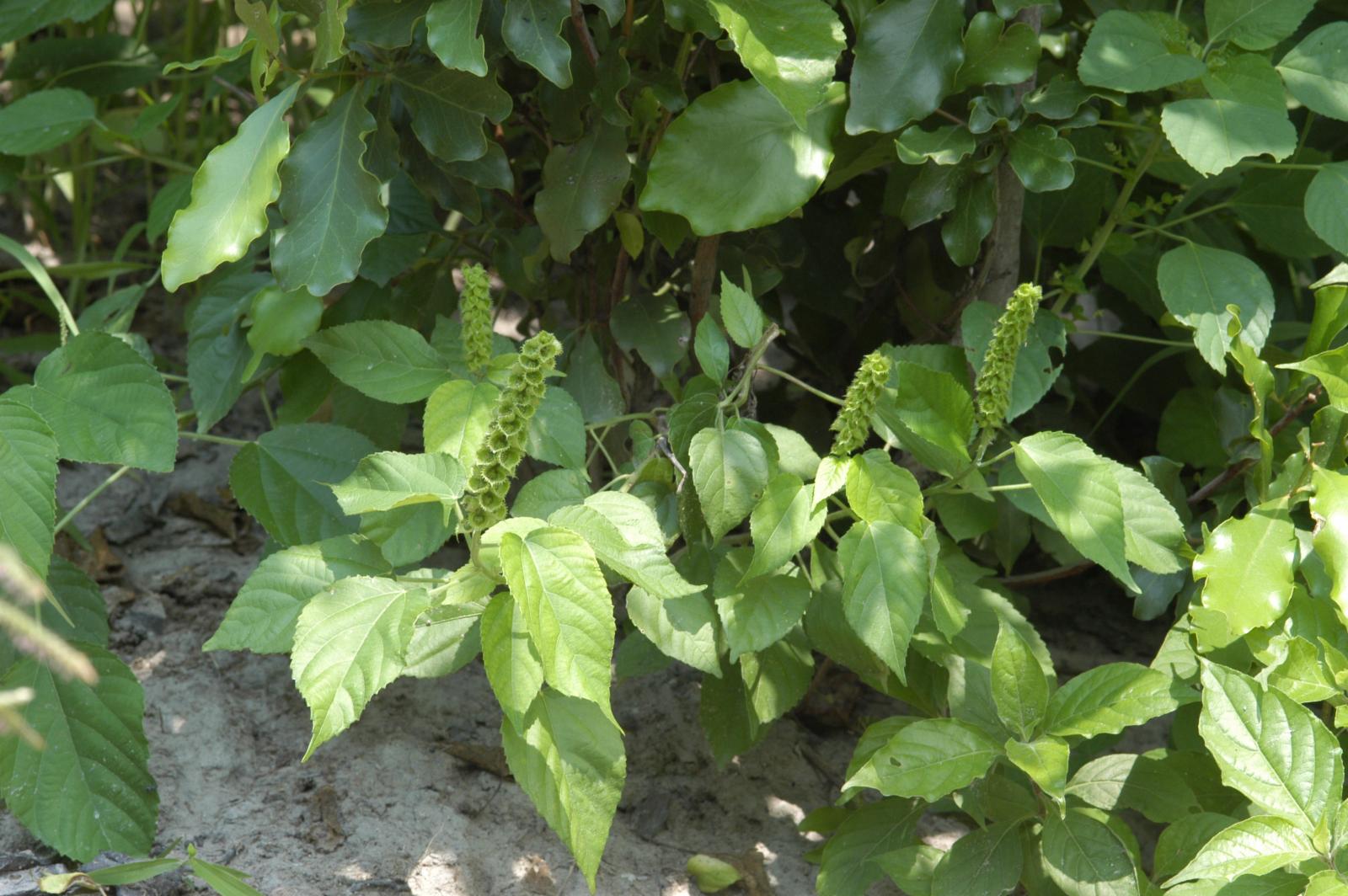Acalypha ornata

|
|
Scientific
Classification:
Synonyms:
Species
ID: NMP-224;wfo-0000978769;NCBI_Taxonomy ID: 2906969 Common
Names: Local
Names: Description: Acalypha ornata is a robust,
much-branched woody herb or shrub that can grow up to 5 meters tall. The stems
are often hairy and purplish when young. Leaves are elliptic-ovate to ovate,
measuring up to 16 × 10 cm, with a thin texture and a margin that is toothed.
The plant produces unisexual flowers in separate inflorescences, usually on the
same plant, with male and female flowers arranged in spikes. Distribution
and Habitat:
This species is native to tropical Africa, occurring from Nigeria to Eritrea
and Ethiopia, and southward through eastern Africa to Angola, Namibia, Malawi,
Mozambique, Botswana, and Swaziland. It thrives in forest undergrowth and
edges, wooded grassland, deciduous woodland, thickets, often riverine areas,
rocky places, secondary regrowth, and disturbed lands, from sea level up to
2,000 meters in elevation. Medicinal
Properties:
Acalypha ornata is widely used in traditional African medicine. The
plant is utilized to treat leprosy and other skin conditions. Additionally, the
leaves are consumed as a vegetable, often combined with pounded groundnuts or
coconut milk, onions, and tomatoes to enhance flavor, and are eaten with
staples like ugali or rice. Known
Toxicity: Additional
Information:
Beyond its medicinal and nutritional uses, Acalypha ornata serves
practical purposes. The stems are used as fibers for weaving baskets, and the
plant is sometimes cultivated as an ornamental due to its attractive foliage.
It is also fed to domestic animals, indicating its role in local agricultural
practices. References:
External
links
More Pictures |
|
| Compounds of Acalypha ornata | |
| References |